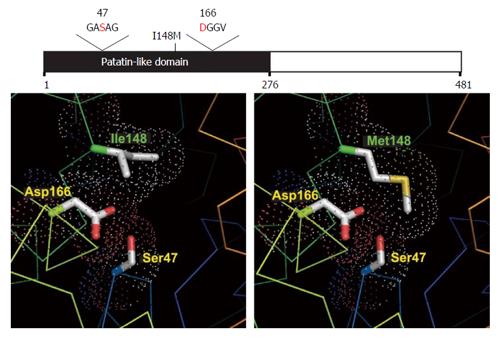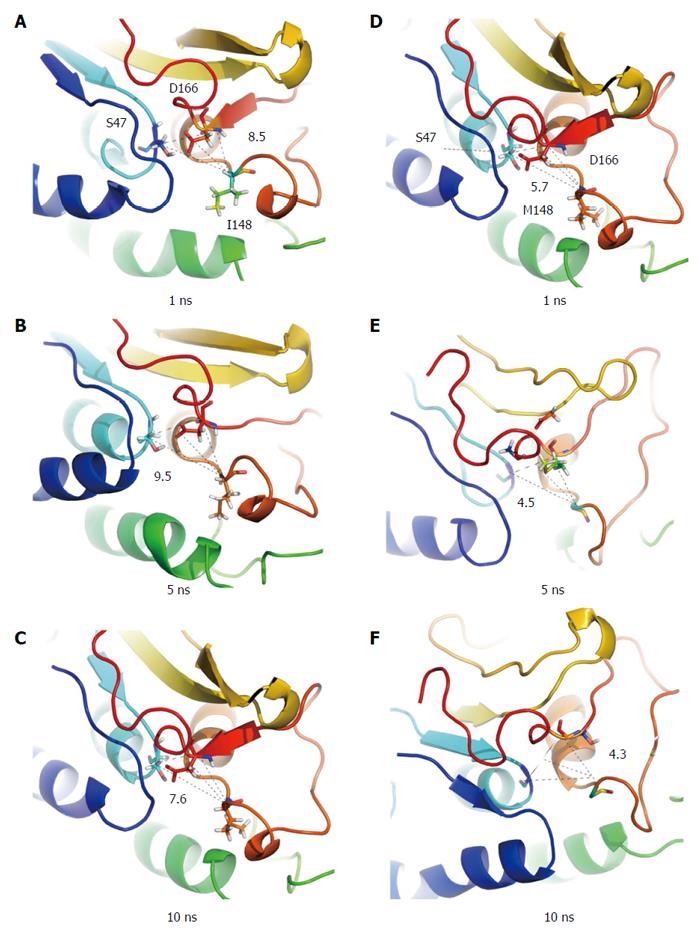Copyright
©The Author(s) 2016.
World J Gastroenterol. Aug 7, 2016; 22(29): 6742-6756
Published online Aug 7, 2016. doi: 10.3748/wjg.v22.i29.6742
Published online Aug 7, 2016. doi: 10.3748/wjg.v22.i29.6742
Figure 1 Structural models of wild type and mutant PNPLA3.
Structural models of normal (Ile148) and mutant (Met148, associated with increased hepatic triglyceride content) PNPLA3 are shown in the left and right panels, respectively. This change effectively blocks substrate access to the catalytic dyad seen at Ser47 and Asp166. Adapted from He et al[8] used under Creative Commons-BY licensing.
Figure 2 Structural snapshots of wild type and mutant PNPLA3 in substrate-free systems.
Subplots A-C present conformations of the wild type protein at 1, 5, 10 ns, respectively, while D-F present the I148M mutant. From Xin et al[18] with permission of the copyright holder.
Figure 3 Effects of TM6SF2 genetic variations.
TM6SF2 plays a role in VLDL export from liver to serum which results in increased serum lipids and myocardial infarction, and decreased risk of liver steatosis. From Kahali et al[67], used by permission of the copyright holder. Chol: Cholesterol; LDL: Low-density lipoprotein cholesterol; IHTG: Intrahepatic triglyceride; NASH: Nonalcoholic steatohepatitis; TG: Triglyceride; VLDL: Very low-density lipoprotein.
- Citation: Severson TJ, Besur S, Bonkovsky HL. Genetic factors that affect nonalcoholic fatty liver disease: A systematic clinical review. World J Gastroenterol 2016; 22(29): 6742-6756
- URL: https://www.wjgnet.com/1007-9327/full/v22/i29/6742.htm
- DOI: https://dx.doi.org/10.3748/wjg.v22.i29.6742











